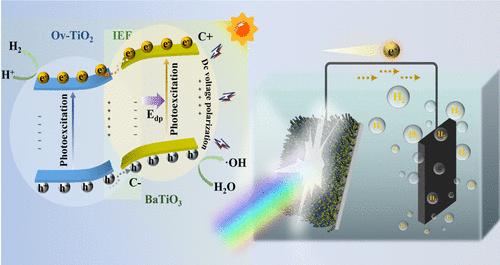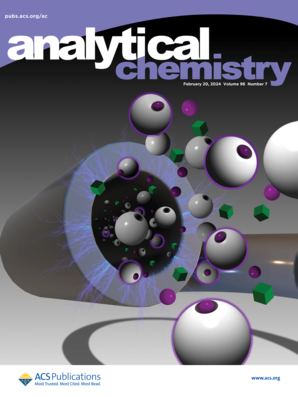Synergistic Enhancement of PEC Activity in Heterojunction Assisted by Oxygen Vacancies and Ferroelectric Polarization at Zero Bias: Mechanism Study and Achievement of Ultrasensitive Detection
IF 6.7
1区 化学
Q1 CHEMISTRY, ANALYTICAL
引用次数: 0
Abstract
The utilization of ferroelectric polarization-assisted photoelectrochemical (PEC) systems holds huge promise for solving the issue of high recombination of photogenerated electron–hole pairs. Monitoring their intricate charge-transfer process can offer profound insights into the advancement of highly active photoelectrodes. In this work, the hydrothermally synthesized titanium dioxide nanorod arrays (TiO2 NRAs) are subjected to in situ etching to introduce oxygen vacancies (Ov), and subsequently loaded with barium titanate (BaTiO3, BTO) nanoparticles to form a ferroelectric polarization effect-assisted type-II heterojunction. The resulting Ov-TiO2/BTO demonstrates an ultrahigh photocurrent of 102 μA and outstanding stability over 7200 s, far surpassing majority of recently reported PEC photoanodes operating at a bias voltage of 0 V (vs Ag/AgCl). Notably, the photoinduced charge transfer in ferroelectric Ov-TiO2/BTO was monitored at the microscale by advanced scanning photoelectrochemical microscopy (SPECM). As a showcase, the aptamer-coupled self-powered PEC biosensor for kanamycin presents excellent sensitivity and good anti-interference ability. This study not only elucidates the intrinsic mechanism of the synergistic amplification of photoelectric signals by oxygen vacancies and ferroelectric heterojunctions but also provides a reliable platform for the ultrasensitive detection of biological molecules.

求助全文
约1分钟内获得全文
求助全文
来源期刊

Analytical Chemistry
化学-分析化学
CiteScore
12.10
自引率
12.20%
发文量
1949
审稿时长
1.4 months
期刊介绍:
Analytical Chemistry, a peer-reviewed research journal, focuses on disseminating new and original knowledge across all branches of analytical chemistry. Fundamental articles may explore general principles of chemical measurement science and need not directly address existing or potential analytical methodology. They can be entirely theoretical or report experimental results. Contributions may cover various phases of analytical operations, including sampling, bioanalysis, electrochemistry, mass spectrometry, microscale and nanoscale systems, environmental analysis, separations, spectroscopy, chemical reactions and selectivity, instrumentation, imaging, surface analysis, and data processing. Papers discussing known analytical methods should present a significant, original application of the method, a notable improvement, or results on an important analyte.
 求助内容:
求助内容: 应助结果提醒方式:
应助结果提醒方式:


